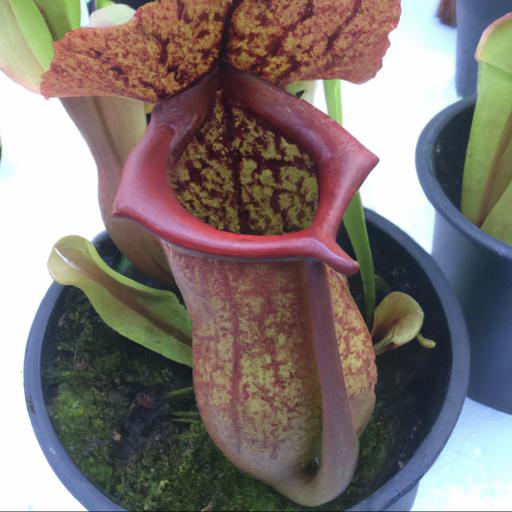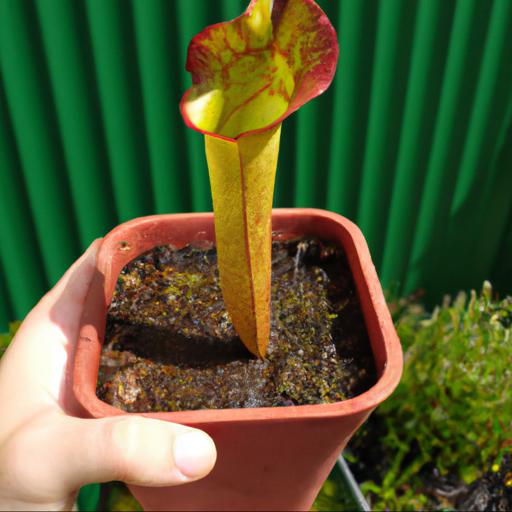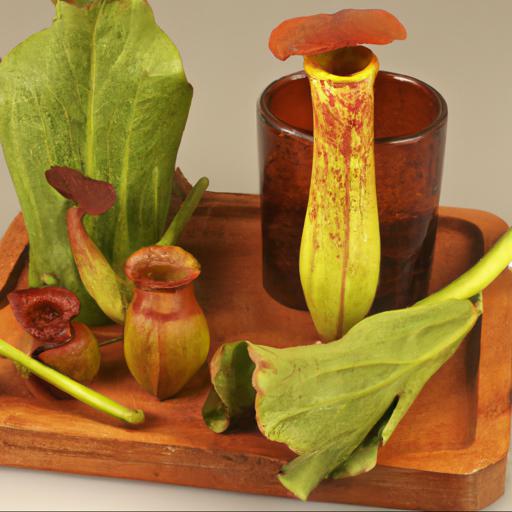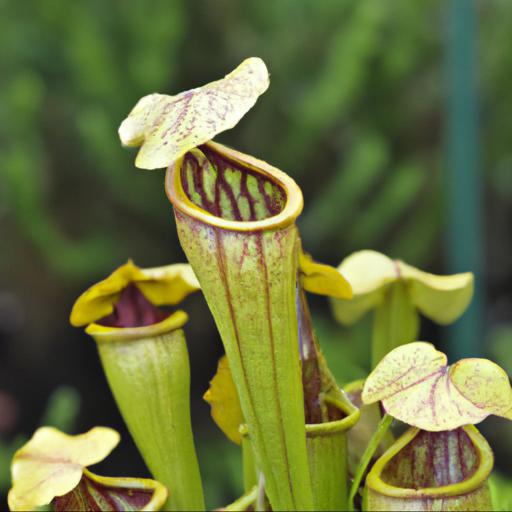Sarracenia flava is a carnivorous plant native to the southeastern United States. It is a member of the Sarraceniaceae family and is known for its bright yellow flowers and pitcher-shaped leaves. This plant is an excellent choice for those looking to add an interesting and exotic touch to their garden.
Sarracenia flava is easy to care for and can be grown in a wide variety of environments. It has a long blooming period and is an attractive addition to any garden.
With its unique shape and bright yellow flowers, Sarracenia flava is sure to draw attention and admiration from gardeners and visitors alike.
Characteristics of sarracenia flava

Sarracenia flava is an easily recognized carnivorous plant that captures its prey with the help of a trumpet-shaped leaves. Belonging to the genus Sarracenia, the flava species is native to the east coast of the United States, most notably the southern part of the Atlantic in the Carolina, Georgia, and Florida region.
The plant is mostly shade-tolerant and therefore inhabit bogs, wet meadows, open sandy areas and spring-fed streams. At first glance, the leaves of a Sarracenia flava can appear daunting, due to their peculiar shape. They reach an impressive height of 3 to 4 feet, with pitchers that can reach up to 6 inches in length.
The leaves themselves are smooth, waxy, and red or green, although they can also come in various mixtures of these two colors. The lids of the pitchers are typically yellowish, while the bottom is that of a deep red. The red color at the bottom of the pitcher is where the flava species truly benefits its user.
This specialized area serves as a trap for small bugs and insects. It contains nectar, which attracts its prey, and when insects get too close, a ring of copiously abundant hairs stand in its way and prevent further advancement.
This then traps the creature at the bottom, where it eventually dies from the lack of oxygen or withers away due to a lack of nutrition. Aside from its carnivorous qualities, the Sarracenia flava is well known for its flowers, which are iconic of their purple hue for certain species. If a well maintained and cared for, this magnificent flower can pop out in the late spring of North American habitats.
All in all, the Sarracenia flava is a beautiful and astonishing plant that earns a spot amongst most passionate gardeners.
Growing and caring for sarracenia flava

A sarracenia flava, or the yellow trumpet pitcher plant, is a desirable addition to any garden that receives full sun, making it perfect for the UK climate. Native to sunny, southeastern US wetlands, it thrives in shallow, wet areas, making water gardens and bog gardens ideal habitats for the species.
The lime-green, yellow, and red foliage make the sarracenia flava a visually striking plant with substantial interest for gardeners and observers alike. The plant itself is a perennial and evergreen species, with a single slender stem rising several inches, and leaves that form at the top. The colorful pitcher-like leaves act as a trapping mechanism, consuming insects with a viscous slime inside of them, making the sarracenia flava a keen choice for gardeners wanting to attract wildlife, particularly insect-eating birds.
It is also useful for collecting rainwater while simultaneously adorning the garden with its fascinating features. When it comes to caring for the plant, it requires moist soil, with regular watering and fertilization. Natural fertilizers such as compost are an ideal choice when potting, as the plant enjoys plenty of nutrients.
To promote optimum growth, always ensure the soil is well-draining and water regularly. Daily misting is also beneficial for encouraging insect-trapping strategies, which is the plant’s natural defense system.
In colder months, the sarracenia flava should be lifted from the soil and stored in a protected spot, ensuring the survival of the species. Overall, the sarracenia flava is a wonderful and resilient choice for the UK gardener who enjoys the natural wonders of the insect-eating world. With minimal effort and some attention to start, you can watch the species thrive in your garden, while enjoying its many features.
Uses of sarracenia flava

Sarracenia flava, commonly known as the Yellow Pitcher Plant, is a remarkable species of carnivorous plant that has many uses. In the UK, it has become popular as a contained accent plant in the home, garden and balcony. It can also be used as a garnish in salads and other dishes.
With their cheerful yellow and red flowers, Sarracenia flava can add a touch of colour to any environment. They also have their practical uses.
By releasing a sweet aroma, they attract flies and other insects, which are then caught in their distinctive pitchers. This makes them a great way to keep pests off your garden.
Sarracenia flava are not just stationary containers, either. This species of carnivorous plant is known for its mobility. It will actually, if the conditions are right, move itself towards insect pollinators, such as flies and wasps, to help it reproduce.
This is known as ‘zoophily’. Their readiness to move from spot to spot makes Sarracenia flava relatively easy to care for.
Part of their appeal is that they don’t require a great deal of tending. As long as they’re placed in a sunny location and given plenty of water and drainage, they should thrive. This makes them ideal for those who don’t have a lot of time to dedicate to gardening.
Interesting facts about sarracenia flava
OnlySarracenia flava, nicknamed the ‘Trumpet Pitcher Plant’, is an iconic species of carnivorous plant found in the wetlands of the Southeastern United States and parts of Québec, Canada. As the largest plant in the Sarracenia family, it can reach up to 5 meters in height and be distinguished by its vivid yellow or orange flowers and long, cup-shaped leaves.
These long, tube-like leaves collect rainwater and a sugary secretion, which is how the plant lures insects like Christmas beetles or spiders inside. But beware—once it’s in, it can’t get out!
Sarracenia flava has an interesting history of use. It has been used for many centuries as an antiseptic aid for treating open wounds, thanks to its antibacterial and antifungal properties.
It was also once believed to be used by Native American tribes as a general tonic. To this day, some regions still use it to concoct mouthwashes and tonics! Interestingly, Sarracenia flava has some unique adaptations that allow it to survive in difficult environments.
It can absorb moisture from the air and can go dormant during dry spells. It can also use CAM photosynthesis—an adaptation to conserve water that helps to reduce transpiration and keep the plant hydrated.
In the wild, Sarracenia flava can make a great addition to gardens and landscapes alike. Not only are these plants an incredible sight to behold, but they also provide essential insect control. What’s more, this plant is hardy and easy to care for, making it a great choice for amateur green thumbs who are just starting out.
Whether potted or planted in the ground, Sarracenia flava is sure to make a unique addition to any garden.
Our video recommendation
Bottom Line
The Sarracenia flava is a carnivorous plant native to the southeastern United States. It is a perennial species of pitcher plant and is known for its bright yellow flowers and its ability to trap and digest insects. This plant is easy to grow and care for, making it a popular choice for home gardens.
The Sarracenia flava is an attractive and interesting addition to any outdoor space, providing a unique and natural way to control pests.
FAQ
What is the scientific name of Sarracenia flava?
The scientific name of Sarracenia flava is Sarracenia flava L.
What is the natural habitat of Sarracenia flava?
The natural habitat of Sarracenia flava is wet, acidic, sandy or peaty soils in open, sunny areas such as bogs, savannas, and wet meadows in the southeastern United States.
What are the characteristics of Sarracenia flava?
Sarracenia flava is a carnivorous plant native to the southeastern United States. It has a tall, upright stem with a rosette of leaves at the top. The leaves are bright green and have a trumpet-like shape. The flowers are yellow and have a sweet, honey-like scent. The plant also produces a sweet nectar that attracts insects. It is adapted to living in wet, acidic soil and can tolerate temperatures as low as -20°C.
How does Sarracenia flava reproduce?
Sarracenia flava reproduces by producing seeds, which are spread by wind and water. The plant also reproduces asexually through rhizomes.
What are the common predators of Sarracenia flava?
Common predators of Sarracenia flava include frogs, lizards, birds, and small mammals such as raccoons and opossums.
How does Sarracenia flava capture its prey?
Sarracenia flava captures its prey by using a combination of its tall, pitcher-shaped leaves and a slippery inner surface. The leaves contain a pool of digestive enzymes and a sweet nectar that attracts insects. When the insects land on the slippery surface, they are unable to climb out and eventually drown in the digestive enzymes.

